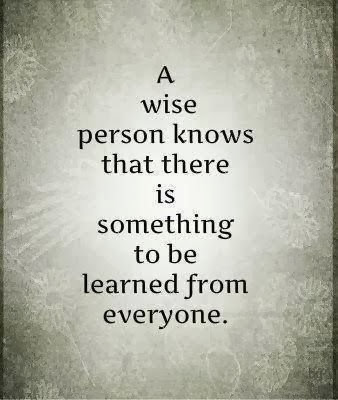Some of the simplest things that make us great are being forgotten. I was having dinner the other day with a high ranking Aikido teacher. He was wearing a nice watch and I complimented him on it. He asked why I didn't wear a watch since I obviously liked them and noticed his. He asked me, "Can you tell time?" I was a bit taken aback by his question. I quizzically thought to myself, "What?" as I answered, "yes." I guess he could see that I was perplexed by the inquiry and he elaborated. He said, "I am a school teacher and you'd be surprised how many kids can't tell time." This lead us into a lengthy discussion about the disadvantages that arise from losing traditional skills. Today more and more, technology is making our lives easier and easier. There is no time or necessity for things like telling time, spelling, handwriting or knowing how to drive manual transmission car. All of these former "inconveniences" have been replaced with things that are faster and require less skill. But what do we lose when we lose those skills?
There is an old adage in project management that goes, "Cheap, fast, good." Wikipedia defines it as: You are given the options of Fast, Good, and Cheap, and told to pick any two. Here Fast refers to the time required to deliver the product, Good is the quality of the final product, and Cheap refers to the total cost of designing and building the product. This triangle reflects the fact that the three properties of a project are interrelated, and it is not possible to optimize all three – one will always suffer. In other words you have three options:
- Design something quickly and to a high standard, but then it will not be cheap.
- Design something quickly and cheaply, but it will not be of high quality.
- Design something with high quality and cheaply, but it will take a relatively long time.
On a basic level, these skills do their jobs of being able to tell time, being able to drive a car or being able to write. On a deeper level, telling time teaches math and numbers, driving manual teaches hand-eye coordination and writing teaches spatial reasoning. All of those things are perishable skills.
People today often think that Aikido is something that they can simply come back to and pick up where they leave off. Nothing is farther from the truth. Aikido, like driving, math, shooting or handwriting is a perishable skill. If one does not do it regularly, they will lose it.
It is always funny to see someone come back from a long layoff and try and do Aikido at the level that they left off at only to discover their skill has vanished. A couple of years ago a guy came back from a 15 year layoff where he left as a 20 something. During the class he was going really hard and I told him to "take it easy" and he scoffed at me. Sure enough the next day he emailed me that he "couldn't even get out of bed the next day" and decided to quit. What did he think was going to happen?
Studies have shown that professional athletes begin to see a decline in fitness after 10 days of inactivity. What does that mean for us that don't come to class regularly? Aikido requires good footwork, balance, coordination, timing and technique not to mention cardiovascular conditioning and muscle strength and endurance. All of those things decline expeditiously overtime.
In order to "stay in shape" one needs to put themselves into situations that forces them to maintain the skill somewhat. Forcing oneself to wear a watch, hand write notes or come to class regularly is the only way to keep those skills and the hidden benefits from deteriorating. As the old saying goes, "use it or lose it." Please come to class regularly.









